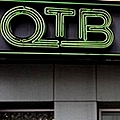- By NYS Comptroller's Office
- Business & Technology
 Print
Print  New York's Off-Track Betting (OTB) corporations are at risk of financial insolvency due to the impact of major revenue decreases and escalating costs, according to State Comptroller Thomas P. DiNapoli. The Comptroller issued an audit and research report today that found total OTB wagering is down $1.2 billion, or 24 percent, during the five-year period of 2009-2013 compared to the previous five-year period.
New York's Off-Track Betting (OTB) corporations are at risk of financial insolvency due to the impact of major revenue decreases and escalating costs, according to State Comptroller Thomas P. DiNapoli. The Comptroller issued an audit and research report today that found total OTB wagering is down $1.2 billion, or 24 percent, during the five-year period of 2009-2013 compared to the previous five-year period.DiNapoli called upon state policymakers to review a number of regulations governing OTBs, including the formula used to calculate the corporations' payments to harness tracks. The Comptroller said the decline in OTB revenue has had a notable impact on distributions to municipalities, which declined from $17.6 million in 2009 to $10.2 million in 2013, a decrease of 42 percent.
"The viability of OTBs is in financial jeopardy," said DiNapoli. "Statutory payment requirements, a downturn in racing interest and major fee increases have each contributed to this plight. As competition for gambling dollars intensifies in New York, the state must reexamine the roles of OTBs. Some localities rely on this revenue to help balance their budgets and already feel the effects of this decline."
This is the second consecutive audit by DiNapoli's office that has identified major financial issues in all five of New York's regional OTBs – Capital, Catskill, Nassau, Suffolk and Western. Using the most recent financial data available, DiNapoli's auditors found the total amount wagered on horse racing, also known as the handle, for these OTBs was $3.7 billion from 2009 through 2013, a 24 percent drop from the $4.9 billion that was wagered from 2004-2008.
The annual handle collected by these OTBs fell from $817 million in 2009 down to $664 million in 2013, a decrease of $153 million. Suffolk OTB experienced the greatest drop, down 29 percent during this time.
If these trends were to continue through 2018, local government distributions would likely fall even further to $5.1 million. However, this projection does not take into account potentially negative effects of the new casinos that will be opening throughout the state.
Since the previous audit issued by his office in 2010, DiNapoli said that regional OTBs have worked hard to implement several recommendations, including closing 33 branches and expanding online and remote wagering. As a result, four of the five OTBs managed to cut their operating expenses during the audit period – Suffolk by $7.7 million, Capital by $3.5 million, Nassau by over $3.2 million and Catskill by nearly $800,000.
The research report released in conjunction with the audit noted the main reason for the decline in OTB handle has been competition, both within the shrinking horse racing industry and from an increase in other gambling venues. The report highlighted that from 2009-2013 the total amount bet on horse racing nationwide fell 11.4 percent, from $12.3 billion in 2009 to $10.9 billion in 2013. Accordingly, net operating revenues for OTBs declined by $12.4 million during this period.
OTBs are also competing with Internet-based gambling, state-sponsored lotteries, nine racing tracks in the state offering video lottery terminals (VLTs), five Native American casinos offering slot machines and table games, casinos in neighboring Connecticut, New Jersey and Pennsylvania, and a racino in Massachusetts.
There are some relief measures that have been put in place to help OTBs. Specifically, the 2013 Upstate New York Gaming Economic Development Act allowed the Nassau and Suffolk OTBs to operate VLT parlors, the first at non-racing facilities. The impact of these facilities could mirror the influx Western OTB received when it opened VLT operations. In 2013, the Western OTB's VLTs brought in $566 million.
In addition to state policy changes, DiNapoli recommended regional OTBs continue to explore cost cutting measures, analyze the performance of each branch and remote locations, and collectively negotiate track rates.
OTB officials coordinated their responses and collectively agreed with the audit findings, but raised concerns regarding declining handle and statutory regulations. For the full copy of the final report, including their response, visit: http://www.osc.state.ny.us/localgov/audits/swr/2015/OTB/global.htm
v11i38




